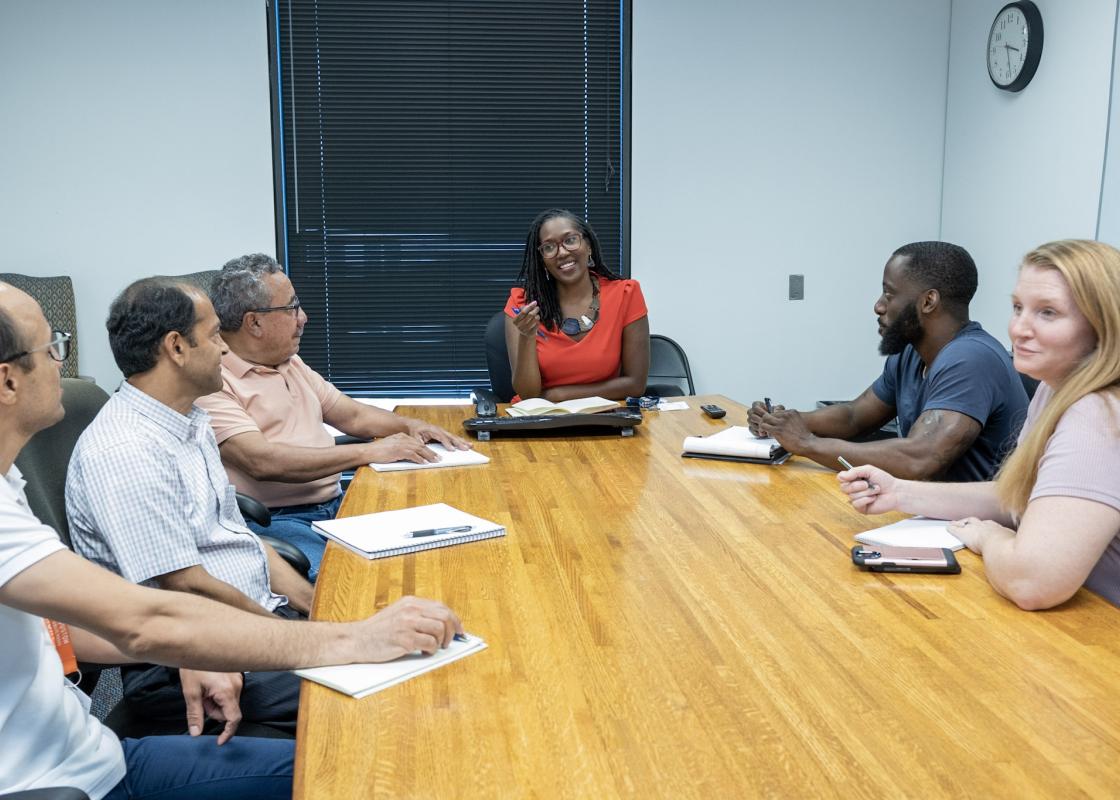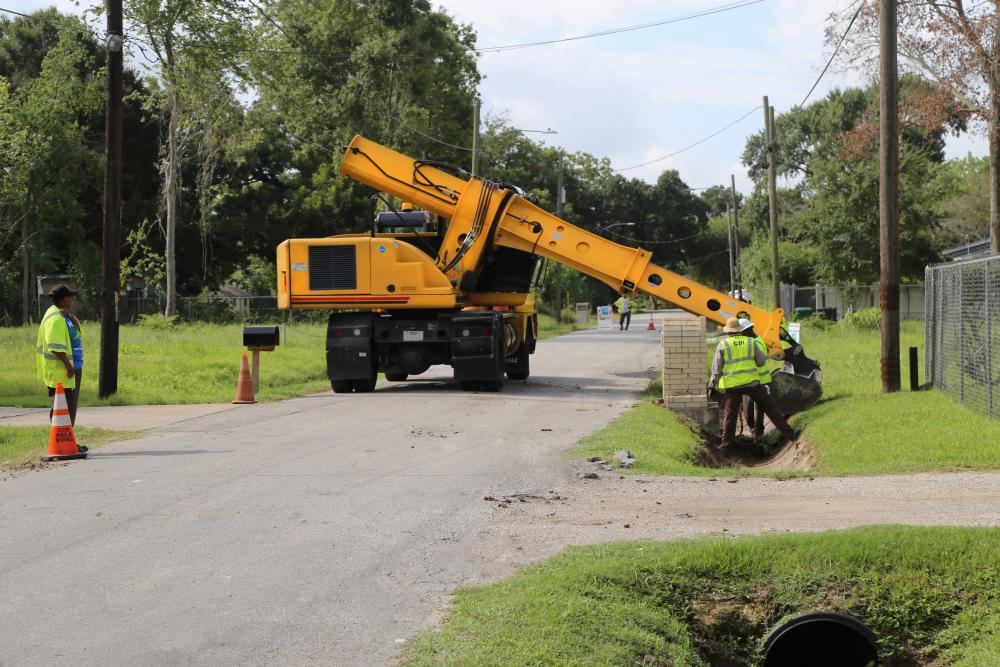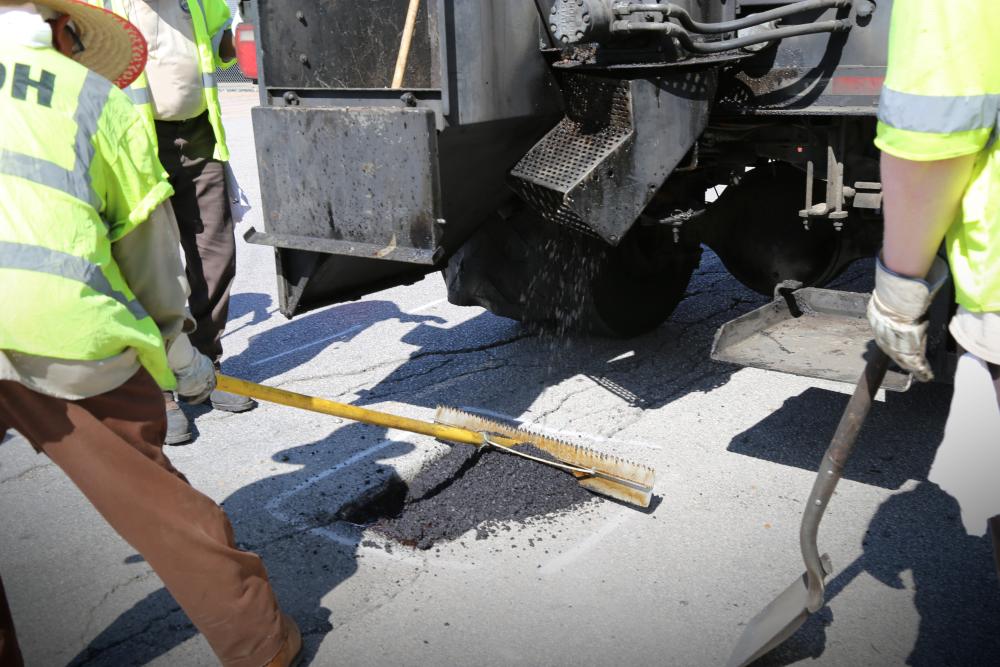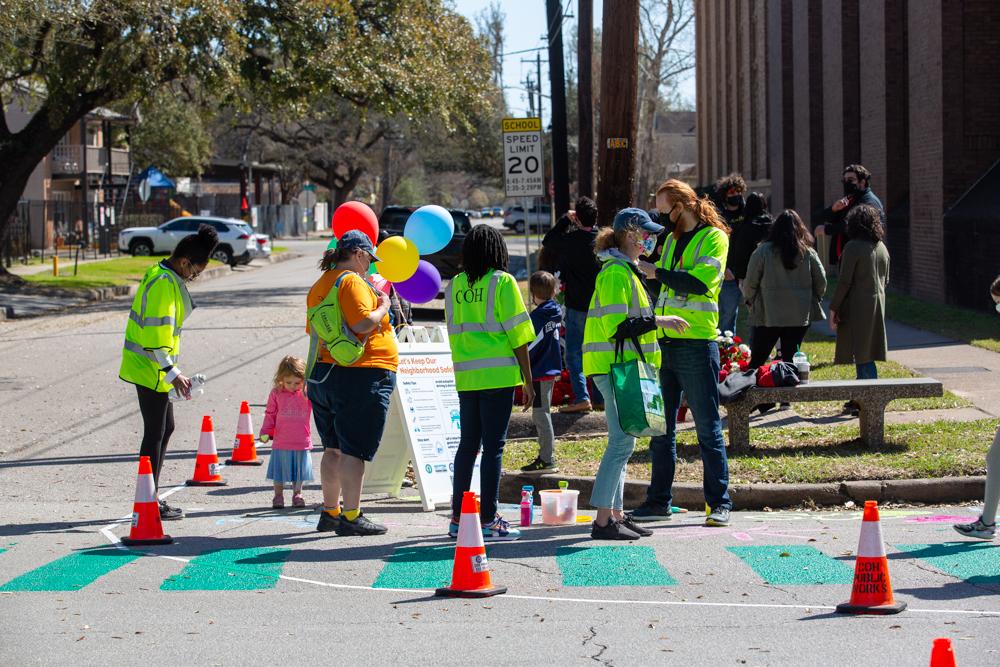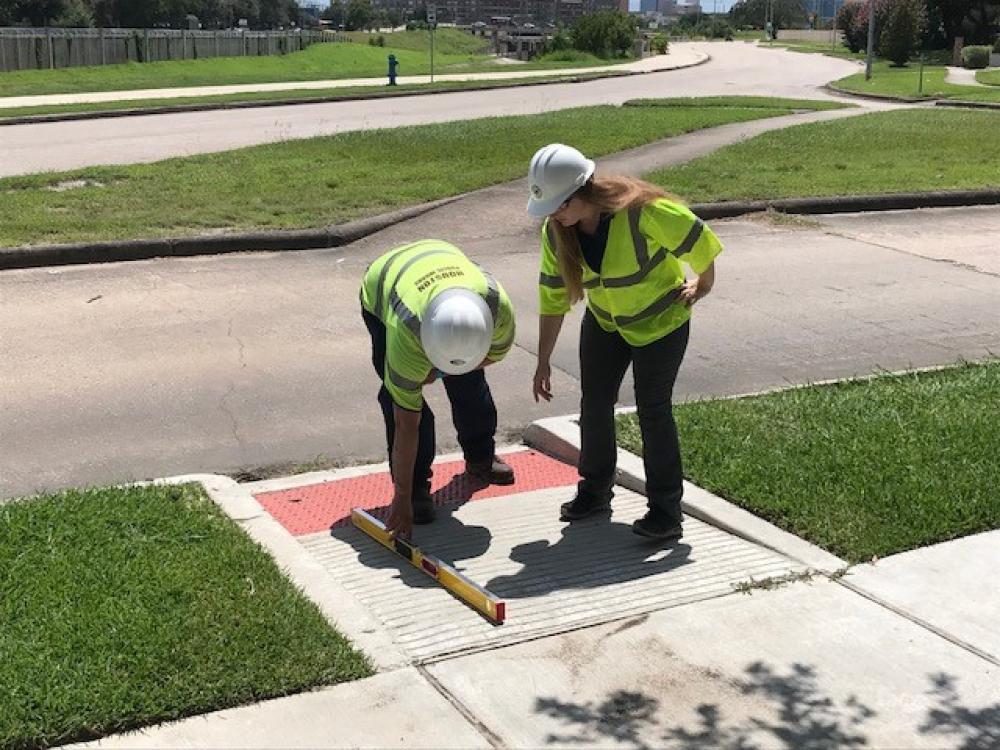Tell us about your work! What do you do? What are you passionate about?
Veronica O. Davis (VOD): I am the Director of Transportation & Drainage Operations (TDO) within Houston Public Works. As the director, I wear many hats: I am a coach, mentor, engineer, planner, strategist, motivator, cheerleader, and sometimes even janitor. I am responsible for over 900 employees as they execute the planning, design, engineering, operations, and maintenance of roadways, bridges, traffic control devices, and stormwater systems.
I’m passionate about making our infrastructure safer and more resilient, particularly in low-income areas that have lacked investment for decades.
What led you to joining Houston Public Works as Director of Transportation & Drainage Operations? What was your path from studying civil engineering to this role?
VOD: After graduating from the University of Maryland, I attended Cornell University where I studied urban planning and civil engineering. I started my career at the federal government, and then I spent time in both the private sector and the local government.
In 2009, I cofounded Nspiregreen with my good friend, who I met through the National Society of Black Engineers. We aimed to start a company that truly linked the technical design and planning process with the public and stakeholder engagement process. As the principal of the planning practice, I oversaw some of the premier plans within the DC region and also worked on projects in Philadelphia, Detroit, Charleston, and Richmond. I was the principal-in-charge for the plans to reduce traffic-related fatalities and serious injuries in Washington, DC, and Alexandria, VA. I participated and led several livability studies that looked at safety, resiliency, and mobility of cities. In 2020, we sold the company to another Black, woman-owned business.
When I was in the process of selling my company, I knew I wanted to be at a city’s department of transportation. I spoke with a few cities about their opportunities, including the city of Houston. I had a temporary duty assignment in Houston during my time at the Federal Highway Administration, so I was familiar with the city. Ultimately, being responsible for transportation and drainage of the fourth largest city in the US is an opportunity that does not come often, and I decided to join the Houston Public Works.
What are you working on currently? What is your office responsible for in the city?
VOD: I have been in this role for almost two years and I now have a better understanding of the mechanics of our programs and operations. I’m currently working on process improvements so that we can be more efficient in how we use our resources as well as improving the work conditions for the front-line employees.
TDO is responsible for 16,000 lane miles, 2,500 traffic signals, 1,370 bridges, 3,900 miles of stormwater lines, 2,800 miles of roadside ditches, and over 1 million traffic signs. We deliver two of Mayor Turner’s signature programs: Next Day Potholes and Street Rehabilitation Initiative. On the drainage side, we deliver the Stormwater Action Team (SWAT) and Local Drainage Program (LDP). As Houston continues to transform, our team is implementing projects to improve the quality of life such as adding high-comfort bicycle lanes, installing green infrastructure to hold stormwater, and improving sidewalks to accommodate children traveling to school and people with disabilities.
What inspires you today?
VOD: My staff. They have great ideas that have turned into pilot projects. For example, we did a pilot with 150 goats in a stormwater detention pond to test out a more sustainable way of vegetation management. A successful pilot will allow us to use goats to supplement our vegetation management crews, having them in areas where it is unsafe for our crews or too difficult for our equipment. Another example is a pilot for a green street. We are testing permeable pavements on a low-volume road to see how it improves the drainage in a neighborhood.
My frontline employees are the best in the business. In addition to their core mission of operating and maintaining most of what you see in the public right-of-way, they support the fire and police departments during routine emergencies such as traffic crashes and search and rescue in confined spaces. They are on the front line of major emergencies and special events. Their dedication to Houston is unmatched.
Who was an important mentor for you earlier in your career?
VOD: An important mentor early in my career was my dad, who is also a civil engineer. He was the executive director of the American Society of Civil Engineers at the time. He helped me determine the courses and skills necessary to be successful in starting my career.
What is inspiring about doing your work in Houston? What is frustrating?
VOD: It has been inspiring to work with a mayoral administration that has a vision for a paradigm shift to transform the city into a multimodal city. He is a mayor who puts actions behind his convictions and allows our team to move forward with projects that convert our streets so that they accommodate pedestrians, cyclists, and public transit users.
I am frustrated by the number of people dying on the roadway. We have a plan to eliminate deaths and serious injuries. Most of our serious crashes occur on only six percent of our roadways. Even as we move forward with designs to improve safety, there is a disregard for traffic laws by the drivers. People speed even on the small neighborhood streets and routinely run red lights. Worst of all, there are those who drive under the influence of alcohol.
What are the key challenges and opportunities facing the city and region today? How does your work engage with these issues, if it does?
VOD: One key challenge facing the city is how to be resilient as storms get more intense. While the focus is on the large storms like Hurricane Harvey, small but intense storms are also creating challenges with drainage. Houston is a flat city, and in some cases, the street itself is designed to convey water (called sheet flow). The cost to address the issue exceeds the funding available. Our SWAT and LDP programs as well as our maintenance crews are doing an excellent job addressing the drainage. However, it is not enough.
With that challenge is new opportunities. We have been working closely with the Parks and Recreation Department on a toolkit that incorporates drainage in park facilities while enhancing their recreation uses. We are also coordinating with our agency partners on regional detention solutions and preserving open spaces within the flood plain.
Another challenge facing Houston is the increasing number of people dying or being seriously injured in road accidents. A major issue is the excess capacity of our roadway, which encourages people to speed. Working very closely with the Planning & Development Department, we are reevaluating how we use the public right of way. Where appropriate, we are retrofitting the space to accommodate other uses such as protected bike lanes, wider sidewalks, and landscaping. We also piloted outdoor restaurants and bar seating during COVID.
You recently moved here. What do you think about the city so far? What is one of your favorite places in Houston?
VOD: Houston is growing on me. I really appreciate the temperate weather for most of the year and I love the food. I have a small child, so I appreciate the city’s great park and outdoor spaces. One of our favorite places is the Houston Zoo. We are members of the zoo and go so often that I can probably draw the map from memory!
Veronica O. Davis, P.E. is a self-described transportation nerd. She believes all people should have access to safe, reliable, and affordable transportation. She has experience in civil engineering and planning. She is currently the Director of Transportation and Drainage Operations for the City of Houston. She is the Houston representative and Vice President of the National Association of City Transportation Officials. She currently lives in Houston, Texas, with her husband, daughter, and dog.


